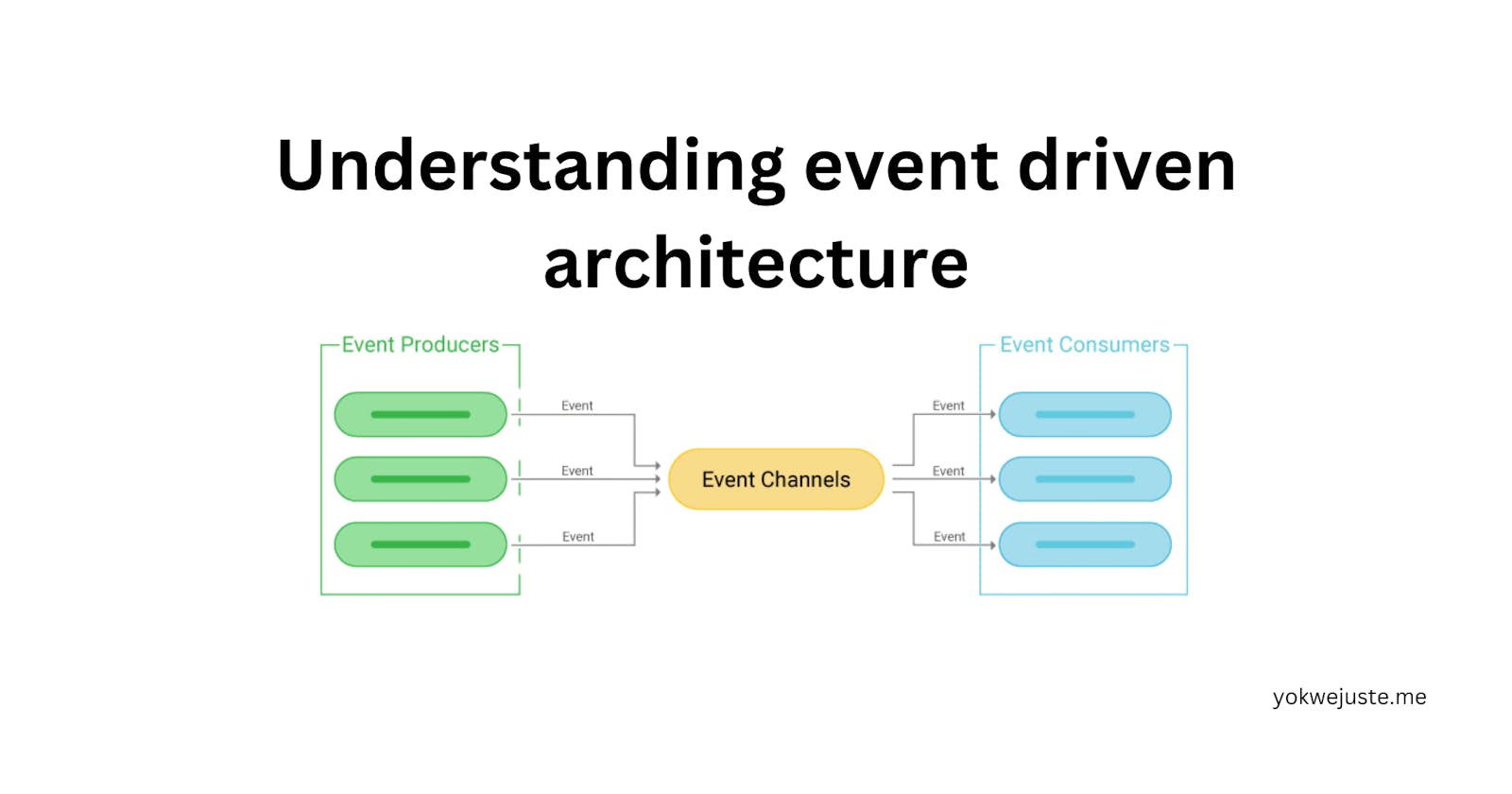Understanding event driven architecture
Get the insights about Event Driven Architecture
Everyday a numerous number of applications are deployed, servers changed, architecture changes too. In this ever-evolving landscape of software development, architectures that support dynamic, real-time applications are increasingly in high demand. Among these, Event-Driven Architecture (EDA) stands out for its ability to facilitate highly responsive, scalable, and loosely coupled systems. This architecture style has gained prominence among world-leading companies, such as Netflix, Twitter, and Amazon, for its significant role in enabling real-time data processing, microservices communication, and the seamless handling of asynchronous events. Imagine a world where systems don't wait around for instructions, but instead react dynamically to the ever-changing tide of events. This is the essence of Event-Driven Architecture (EDA), a paradigm shift that's transforming software development.
The Essence of Event-Driven Architecture
 Event-Driven Architecture revolves around the production, detection, consumption, and reaction to events. An event is a significant change in state, or an update, that something of interest has occurred within the system. EDA is designed to respond to these events asynchronously, allowing systems to react in real time without waiting for a response. This architecture comprises three main components: event producers, event routers (or brokers), and event consumers. Together, they create a dynamic environment where services can operate independently, improving system resilience and flexibility.
Event-Driven Architecture revolves around the production, detection, consumption, and reaction to events. An event is a significant change in state, or an update, that something of interest has occurred within the system. EDA is designed to respond to these events asynchronously, allowing systems to react in real time without waiting for a response. This architecture comprises three main components: event producers, event routers (or brokers), and event consumers. Together, they create a dynamic environment where services can operate independently, improving system resilience and flexibility.
Understanding more about
 Some of us might not be used to the jargon to above, but I got you on this. Let's explore some life scenarios where an EDA can be experienced.
Some of us might not be used to the jargon to above, but I got you on this. Let's explore some life scenarios where an EDA can be experienced.
Imagine you're running a restaurant kitchen. Instead of the chefs constantly asking the waiter "Are there any orders?", the waiter simply shouts, "Order up!" whenever a new order comes in. This is a simple example of how an EDA works. EDA mimics a busy kitchen where events (like "Order up!" shouts) signify important occurrences, such as user actions or system changes. Producers generate these events without awaiting responses, similar to waiters. Consumers, akin to chefs, react to these events, facilitated by a messaging system that distributes events, ensuring efficient communication and responsiveness across different parts of the system. This architecture enhances flexibility, scalability, and real-time processing capabilities.
Imagine a car-based EDA, cars on a highway act as producers, broadcasting signals like lane changes or sudden brakes as events. Other cars, traffic systems, and emergency vehicles serve as consumers, reacting to these signals through a messaging system akin to airwaves or the road itself. This setup enhances safety by enabling quick reactions to avoid accidents, improves efficiency and traffic flow, allows for scalability by accommodating more cars without disruption, and ensures flexibility with diverse vehicle interactions. This analogy exemplifies EDA's dynamic and responsive nature in real-time situations.
In a tag game analogy for EDA, the person tagging acts as the event producer, announcing "tagged!" without awaiting a reply. The others, as event consumers, react by running away, with the air serving as the messaging system to broadcast the "tagged!" alert. This setup illustrates EDA's benefits: fast reactions to keep the game lively, independent actions allowing players to strategize spontaneously, and adaptability to include new players at any time. This simple playground scenario captures EDA's essence—responding to events in a flexible, dynamic system.
Success Stories of Event-Driven Architecture
 Several global companies have successfully implemented EDA to enhance their operations and service offerings. For instance:
Several global companies have successfully implemented EDA to enhance their operations and service offerings. For instance:
Netflix: Netflix has adeptly implemented Event-Driven Architecture (EDA) to orchestrate its vast, distributed microservices ecosystem. This architecture facilitates the seamless real-time processing of data crucial for personalizing user experiences across millions of devices worldwide. By leveraging EDA, Netflix can dynamically adjust its content recommendations, manage streaming quality in real-time, and swiftly handle changes in user preferences or system demands. This approach not only enhances user satisfaction through personalized viewing experiences but also optimizes resource utilization across Netflix's global infrastructure.
Twitter: Twitter employs an event-driven model to efficiently manage the massive flow of tweets and social interactions generated by its users every second. This model enables Twitter to ensure that updates, notifications, and tweets are delivered in a timely manner, despite the enormous volume of data. The use of EDA allows Twitter to filter, sort, and distribute this information effectively, ensuring that users receive relevant content and notifications instantaneously. This capability is crucial for maintaining the platform's relevance and responsiveness, contributing significantly to its user engagement and satisfaction.
Amazon: Amazon incorporates Event-Driven Architecture into its e-commerce platform to excel in real-time order processing, inventory management, and customer notifications. EDA enables Amazon to instantly update inventory levels, process orders as soon as they're placed, and communicate with customers about their order status, all in real-time. This system is key to Amazon's ability to provide a seamless shopping experience, from product discovery to delivery. By implementing EDA, Amazon can scale its operations efficiently, manage millions of products, and handle the dynamic nature of online shopping, ensuring customer satisfaction and operational excellence.
When to Use Event-Driven Architecture
Event-Driven Architecture shines in scenarios where applications or systems require real-time responsiveness, flexibility, and scalability. Here are a few situations where EDA is particularly beneficial:
- Real-time Data Processing: Applications that require immediate processing of data, such as financial trading platforms or online gaming systems, benefit from EDA's capacity to handle data streams efficiently.
- Microservices Communication: EDA supports loosely coupled microservices, enabling them to communicate and function independently, which is crucial for complex, distributed applications.
- Asynchronous Workflows: Systems that involve long-running, asynchronous tasks can leverage EDA to improve performance and user experience by processing tasks in the background.
- Complex Event Processing: In scenarios involving the analysis of multiple events to detect patterns, EDA facilitates the aggregation, filtering, and analysis of event streams in real time.
When Not to Use Event-Driven Architecture
While EDA offers significant advantages, it is not suitable for all scenarios. Here are situations where an alternative architecture might be more appropriate:
- Simple, Monolithic Applications: For applications with straightforward workflows and minimal real-time data processing, a monolithic architecture might be simpler and more cost-effective.
- Low Latency Critical Systems: While EDA supports real-time processing, the inherent latency in propagating events through brokers might not meet the strict latency requirements of some systems.
- Limited Development Resources: Small teams or projects with limited expertise in asynchronous programming and distributed systems may struggle with the complexity of EDA.
Pros and Cons
| Pros | Cons | ||
| Scalability | EDA allows systems to scale more efficiently by decoupling services and distributing processing. | Complexity | The asynchronous nature of EDA can introduce complexity in system design and troubleshooting. |
| Flexibility | Changes to one part of the system can be made independently, reducing the impact on the overall system. | Testing Difficulties | Testing event-driven systems can be challenging due to their asynchronous and distributed nature. |
| Real-Time Responsiveness | EDA supports real-time data processing and immediate response to events. | Dependency on Messaging Systems | EDA relies heavily on messaging systems, which can become a single point of failure if not properly managed. |
| Loose Coupling | Services in an EDA are loosely coupled, enhancing system resilience and making it easier to update or replace components. | Monitoring and Management | Monitoring an event-driven system requires sophisticated tools and strategies to track the flow of events and system health. |
Grab this
:format(gif)/cdn.vox-cdn.com/uploads/chorus_image/image/55279403/tenor.0.gif) Event-Driven Architecture (EDA) is a dynamic and responsive design paradigm embraced by leading companies like Netflix, Twitter, and Amazon to enhance real-time data processing, system flexibility, and user engagement. By leveraging events, producers, consumers, and messaging systems, EDA facilitates scalable, loosely coupled, and efficient systems. Despite its complexity and testing challenges, EDA's benefits in scalability, real-time responsiveness, and flexibility make it a powerful choice for modern, distributed applications.
Event-Driven Architecture (EDA) is a dynamic and responsive design paradigm embraced by leading companies like Netflix, Twitter, and Amazon to enhance real-time data processing, system flexibility, and user engagement. By leveraging events, producers, consumers, and messaging systems, EDA facilitates scalable, loosely coupled, and efficient systems. Despite its complexity and testing challenges, EDA's benefits in scalability, real-time responsiveness, and flexibility make it a powerful choice for modern, distributed applications.
Let's wrap up
 EDA offers a powerful paradigm for building responsive, scalable, and flexible systems. Its adoption by industry giants like Netflix, Twitter, and Amazon speaks volumes about its potential to handle complex, real-time data and operations. However, the decision to implement EDA should be weighed against the system's requirements, organizational capabilities, and potential challenges. When appropriately applied, EDA can transform the way businesses operate, enabling them to thrive in the fast-paced, data-driven world of today.
EDA offers a powerful paradigm for building responsive, scalable, and flexible systems. Its adoption by industry giants like Netflix, Twitter, and Amazon speaks volumes about its potential to handle complex, real-time data and operations. However, the decision to implement EDA should be weighed against the system's requirements, organizational capabilities, and potential challenges. When appropriately applied, EDA can transform the way businesses operate, enabling them to thrive in the fast-paced, data-driven world of today.

